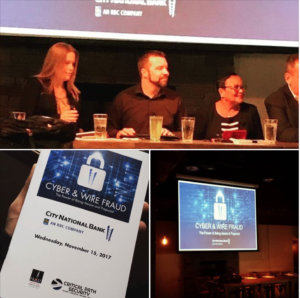
For CEOs, understanding and implementing strong cybersecurity practices isn't just about protecting data—it's about ensuring business continuity, fostering trust, and building a resilient organization. Drawing on recent events and challenges faced by organizations globally, this guide lays out key insights and actionable steps for CEOs.
1. Establishing Effective Communication Channels:
Public perception and response play a pivotal role in the impact of a crisis. CEOs should:
- Proactively Communicate: Transparency with stakeholders, including the public, can mitigate panic and confusion. Effective communication isn't just about messaging; it's about timing, clarity, and consistency.
- Manage Group Psychology: Bank runs or shortages during global crises serve as classic examples of how unexpected public reactions can deepen a crisis. CEOs need to understand and anticipate these reactions to manage and guide public response better.
2. Collaborative Strategies with Government and External Agencies:
Engaging with appropriate government bodies and external agencies can provide valuable insights and resources.
- Forge Government Partnerships: Building relationships with relevant government departments ensures that organizations can quickly tap into expertise or coordinate actions during crises.
- Identify and Engage External Experts: Beyond government, partnerships with external cybersecurity experts can provide third-party assessments, knowledge of global threat landscapes, and specialized solutions.
3. Crisis Preparedness and Continuous Drills:
Preparation is a cornerstone of effective crisis management.
- Develop Crisis Response Plans: Every organization should have a detailed and structured crisis response plan, outlining steps to be taken during various emergency scenarios.
- Conduct Regular Simulations: Tabletop exercises or simulated crisis scenarios can test response plans, identify gaps, and train staff. It's one thing to have a plan, but regularly practicing it ensures faster, more effective action when it's needed most.
4. Navigating the IT Infrastructure:
CEOs don't need to be IT experts, but a high-level understanding of their IT landscape can be invaluable.
- Know the Basics: Understand the difference between your IT and operational technology (OT) networks and the potential vulnerabilities in each.
- Anticipate the Ripple Effect: Recognize that a compromise in one area, like the business IT network, can have cascading effects on other operations.
5. Prioritizing Humility and Continuous Learning:
The cybersecurity landscape is constantly evolving, and no one has all the answers.
- Seek External Expertise: Recognize that there will always be knowledge gaps. Engaging external experts can provide fresh perspectives, up-to-date knowledge, and specialized solutions.
- Promote a Learning Culture: Encourage an organizational mindset that views challenges as learning opportunities, prioritizing continuous training and education.
6. Business Leaders as Technology Trust Ambassadors:
Trust is a cornerstone of business. For CEOs, safeguarding that trust, especially regarding technology, is vital.
- Weigh Investment Decisions Carefully: Balance cost with benefits like enhanced security and increased trust. Your investment decisions today will shape public and stakeholder trust tomorrow.
- Stay Updated on Geopolitical Concerns: From concerns about technology providers to changing global regulations, being informed helps in making better strategic decisions.
CEO's Self-Check Checklist:
- Crisis Drills: Have you participated in a recent cybersecurity tabletop exercise?
- Emergency Contacts: Is your chief information security officer's contact stored outside your primary devices.
- Government Liaison: Do you know your primary government contact for cybersecurity?
A proactive approach to these areas will bolster organizational resilience and can safeguard against both immediate threats and long-term challenges.

